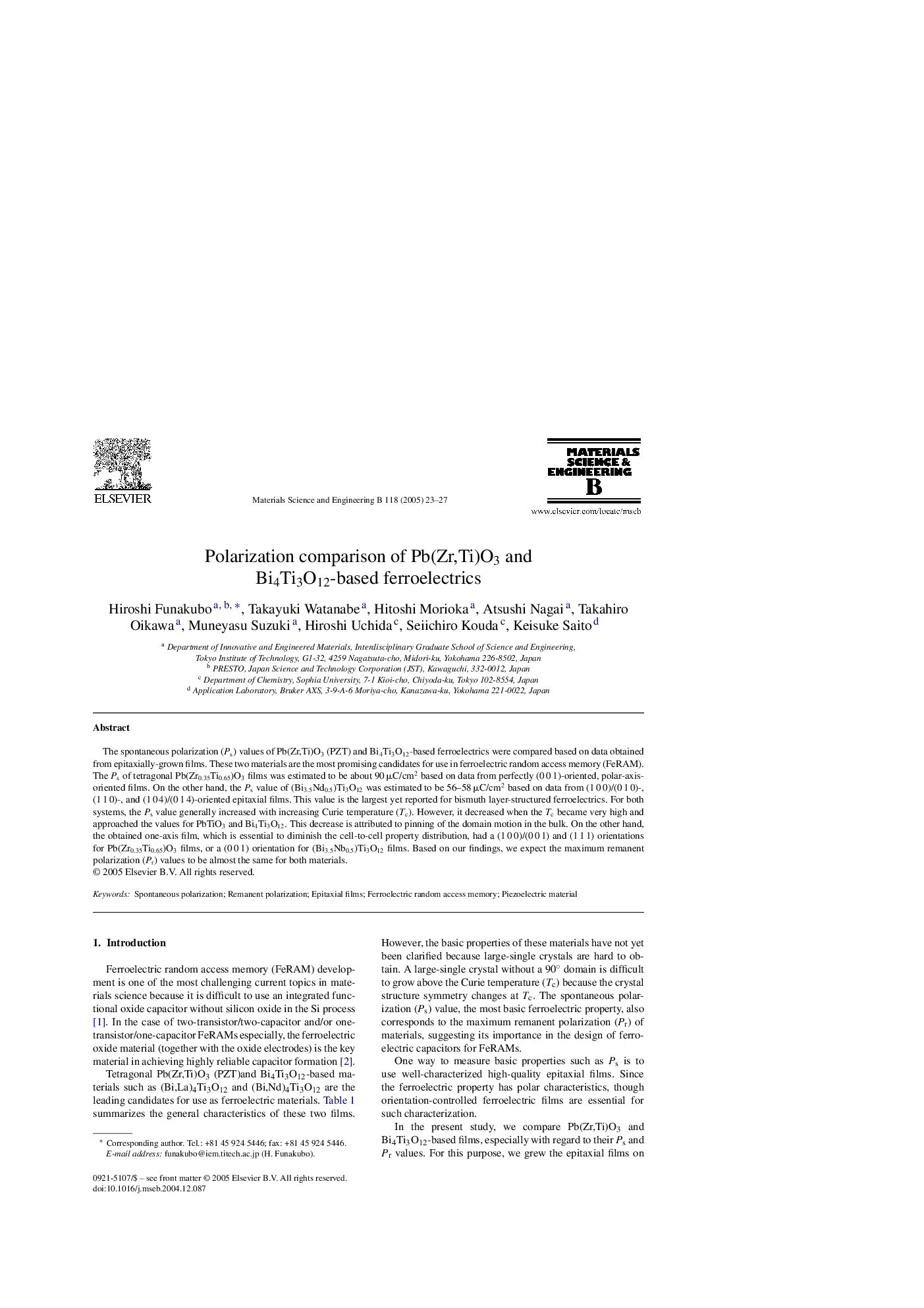| Article ID | Journal | Published Year | Pages | File Type |
|---|---|---|---|---|
| 9784077 | Materials Science and Engineering: B | 2005 | 5 Pages |
Abstract
The spontaneous polarization (Ps) values of Pb(Zr,Ti)O3 (PZT) and Bi4Ti3O12-based ferroelectrics were compared based on data obtained from epitaxially-grown films. These two materials are the most promising candidates for use in ferroelectric random access memory (FeRAM). The Ps of tetragonal Pb(Zr0.35Ti0.65)O3 films was estimated to be about 90 μC/cm2 based on data from perfectly (0 0 1)-oriented, polar-axis-oriented films. On the other hand, the Ps value of (Bi3.5Nd0.5)Ti3O12 was estimated to be 56-58 μC/cm2 based on data from (1 0 0)/(0 1 0)-, (1 1 0)-, and (1 0 4)/(0 1 4)-oriented epitaxial films. This value is the largest yet reported for bismuth layer-structured ferroelectrics. For both systems, the Ps value generally increased with increasing Curie temperature (Tc). However, it decreased when the Tc became very high and approached the values for PbTiO3 and Bi4Ti3O12. This decrease is attributed to pinning of the domain motion in the bulk. On the other hand, the obtained one-axis film, which is essential to diminish the cell-to-cell property distribution, had a (1 0 0)/(0 0 1) and (1 1 1) orientations for Pb(Zr0.35Ti0.65)O3 films, or a (0 0 1) orientation for (Bi3.5Nb0.5)Ti3O12 films. Based on our findings, we expect the maximum remanent polarization (Pr) values to be almost the same for both materials.
Keywords
Related Topics
Physical Sciences and Engineering
Materials Science
Electronic, Optical and Magnetic Materials
Authors
Hiroshi Funakubo, Takayuki Watanabe, Hitoshi Morioka, Atsushi Nagai, Takahiro Oikawa, Muneyasu Suzuki, Hiroshi Uchida, Seiichiro Kouda, Keisuke Saito,
